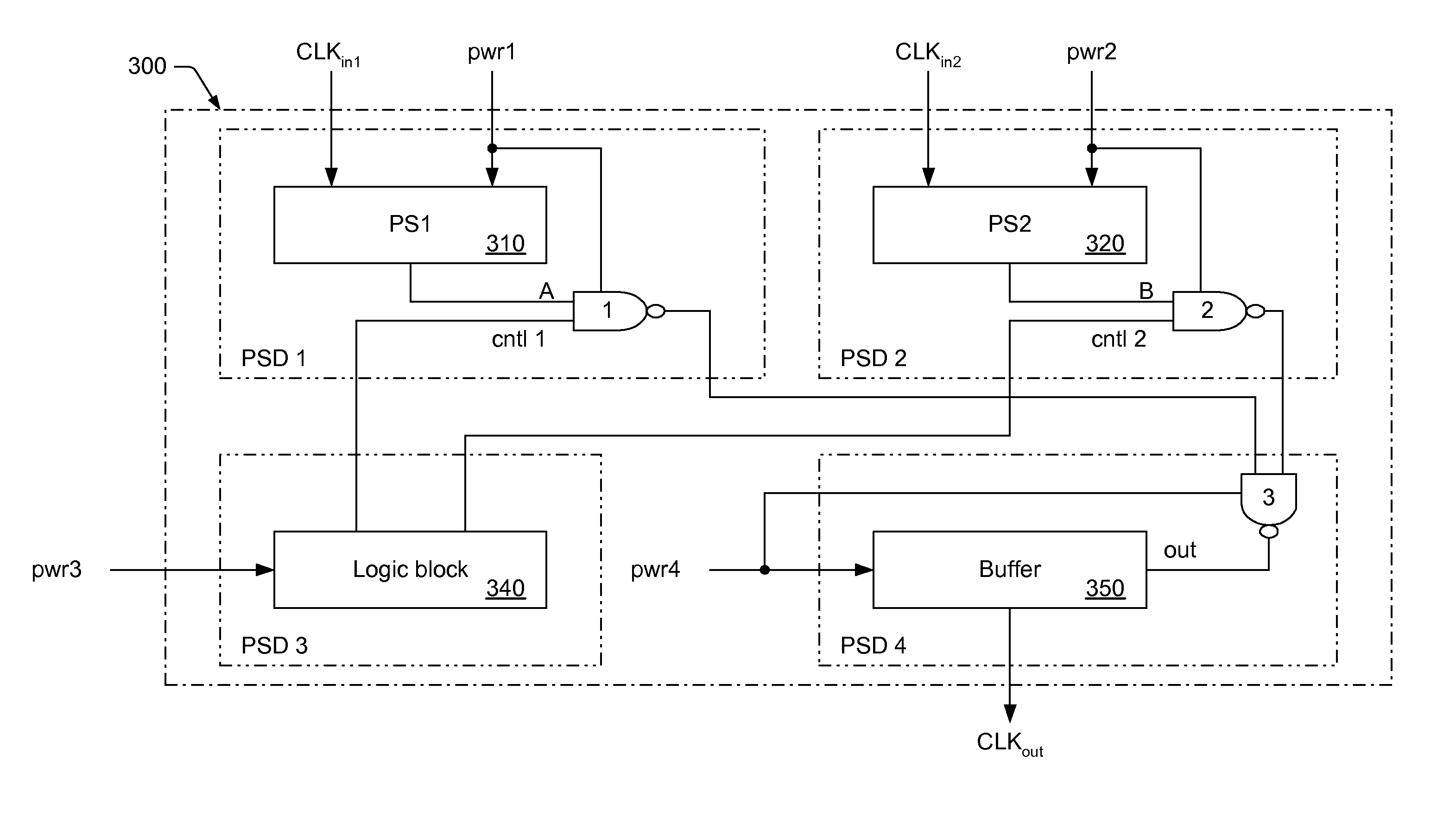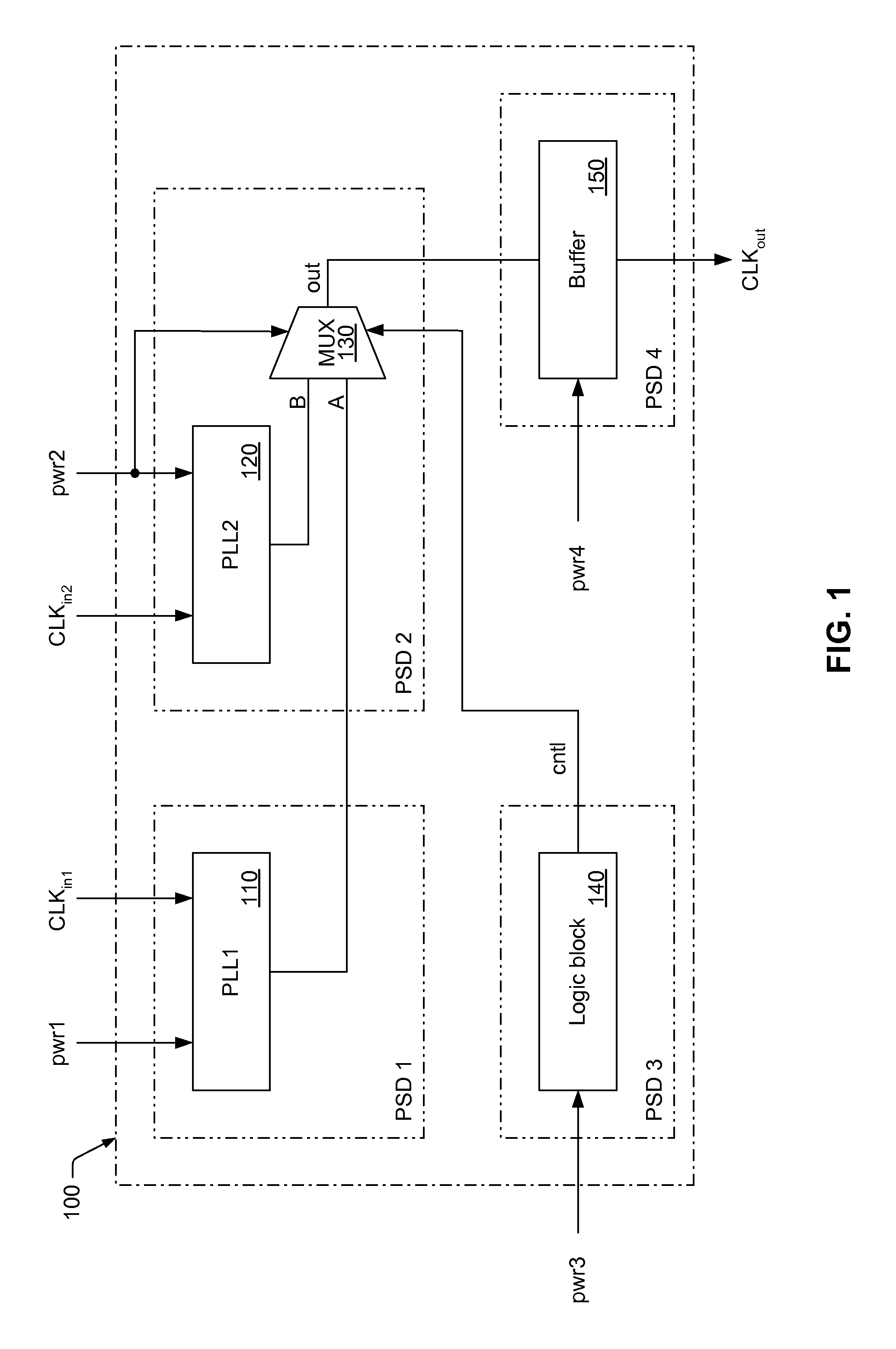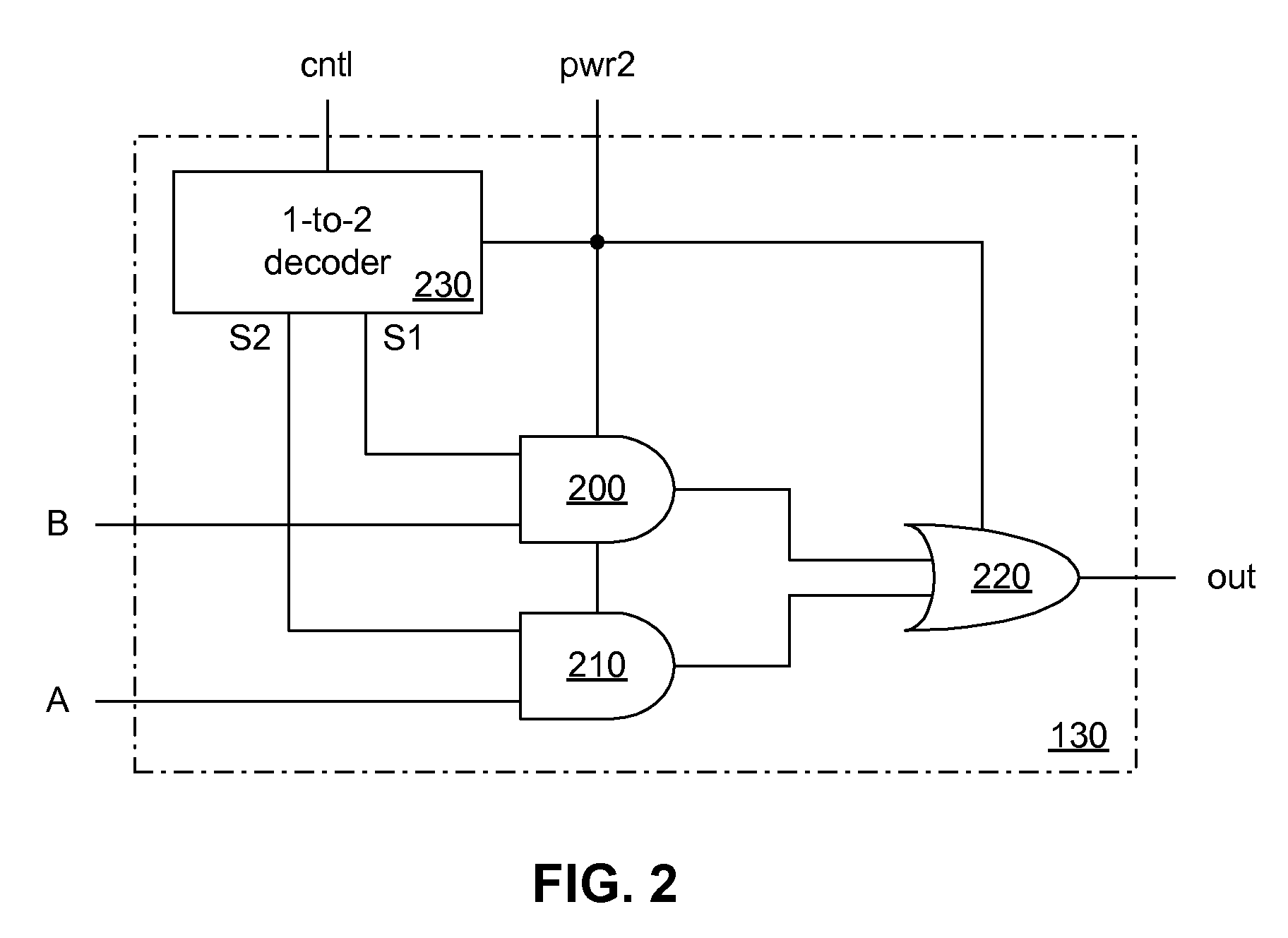Circuit, System, and Method for Multiplexing Signals with Reduced Jitter
a multiplexing signal and circuit technology, applied in the field of multiplexing signal circuits, can solve the problems of significantly affecting system performance and/or reliability, one or more system components, and design and operation problems of electronic systems, and achieve the effect of reducing jitter and reducing jitter
- Summary
- Abstract
- Description
- Claims
- Application Information
AI Technical Summary
Benefits of technology
Problems solved by technology
Method used
Image
Examples
Embodiment Construction
[0030] An exemplary clock network 100 is shown in FIG. 1. In the illustrated embodiment, the clock network includes a first PLL 110, a second PLL 120, a multiplexer 130, a logic block 140 and an output buffer 150. In some cases, the first and second PLLs may each be configured for generating one or more clock signals (e.g., signals A and B) for adjusting the timing of a clock path (coupled, e.g., to CLKout). In FIG. 1, the clock signals generated by the PLLs are supplied to the inputs of a multiplexer (130). The logic block supplies a control signal to the multiplexer for selecting one of the clock signals to be output from the multiplexer. In most cases, the chosen clock signal (out) is supplied to the output buffer, before it is applied to the clock path.
[0031] The clock network shown in FIG. 1 adds crosstalk and power supply noise to the clock path when multiplexing signals (i.e., choosing between more than one signal) from the PLLs. As described in more detail below, the additi...
PUM
 Login to View More
Login to View More Abstract
Description
Claims
Application Information
 Login to View More
Login to View More - R&D
- Intellectual Property
- Life Sciences
- Materials
- Tech Scout
- Unparalleled Data Quality
- Higher Quality Content
- 60% Fewer Hallucinations
Browse by: Latest US Patents, China's latest patents, Technical Efficacy Thesaurus, Application Domain, Technology Topic, Popular Technical Reports.
© 2025 PatSnap. All rights reserved.Legal|Privacy policy|Modern Slavery Act Transparency Statement|Sitemap|About US| Contact US: help@patsnap.com



